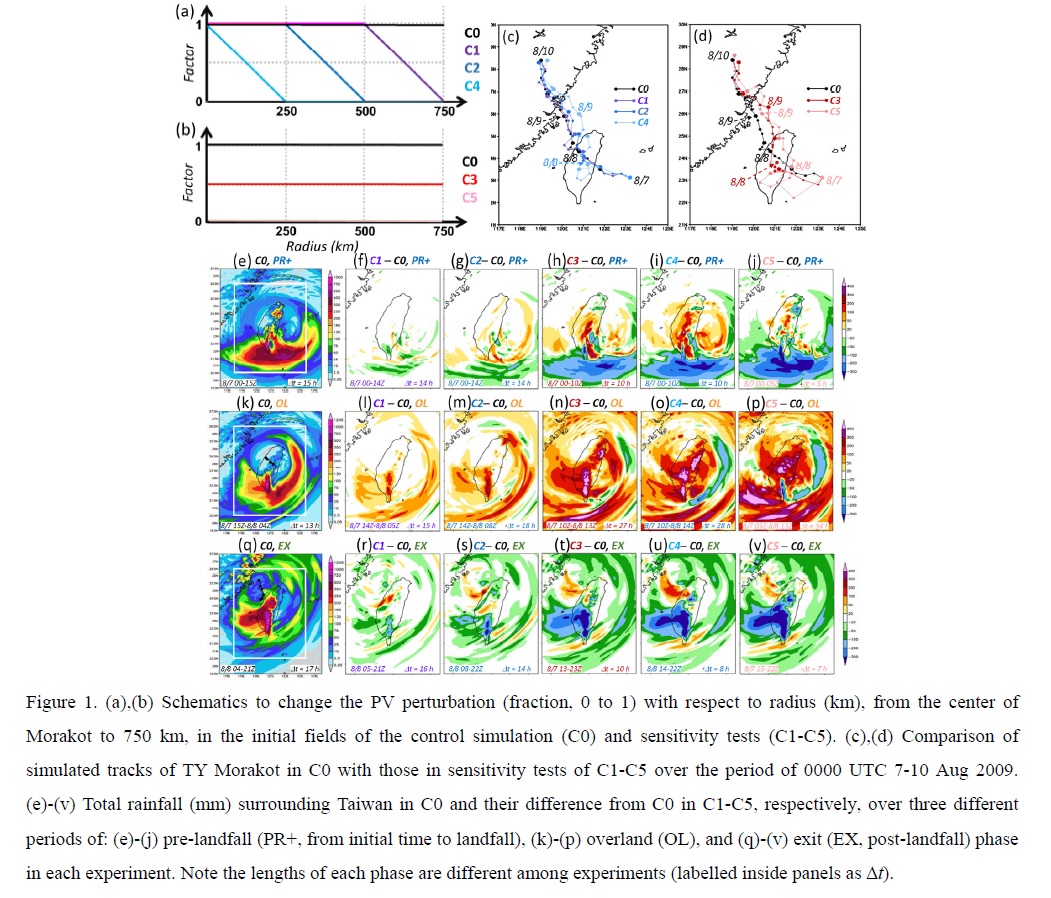Graphical Abstract
Wang, C.-C., K.-Y. Lin, C. A. Davis, S.-Y. Huang, S. C.-S. Liu, K. Tsuboki, and B. J.-D. Jou, 2020: A modeling study on the impacts of Typhoon Morakot’s (2009) vortex structure on rainfall in Taiwan using piecewise potential vorticity inversion. J. Meteor. Soc. Japan, 98, 707-733.
https://doi.org/10.2151/jmsj.2020-036
Graphical Abstract
Plain Language Summary:
In this study, the impacts of Typhoon Morakot’s (2009) vortex structure on the extreme rainfall in Taiwan are investigated through modeling with an application of piecewise potential vorticity (PV) inversion. The control experiment (C0), starting at 0000 UTC 7 August or 15 h before landfall, reproduces the event realistically and is validated against the observations. By altering the PV perturbation inside 750 km from its center, we conduct sensitivity experiments in which the size and/or circulation strength of Morakot is reduced/weakened in the initial field in several different ways.
Highlights:
- Taiwan receives an overall rainfall amount either comparable to, or even more than (up to +12%), C0 in all tests. This result shows the strong southwesterly flow and its moisture supply were bigger factors than the vortex structure.
- In the southern Central Mountain Range on 8 August, the rainfall tended to decrease by up to 40% with the contraction and a weaker outer circulation, indicating that the vortex structure plays an important role in the rainfall of this region.







